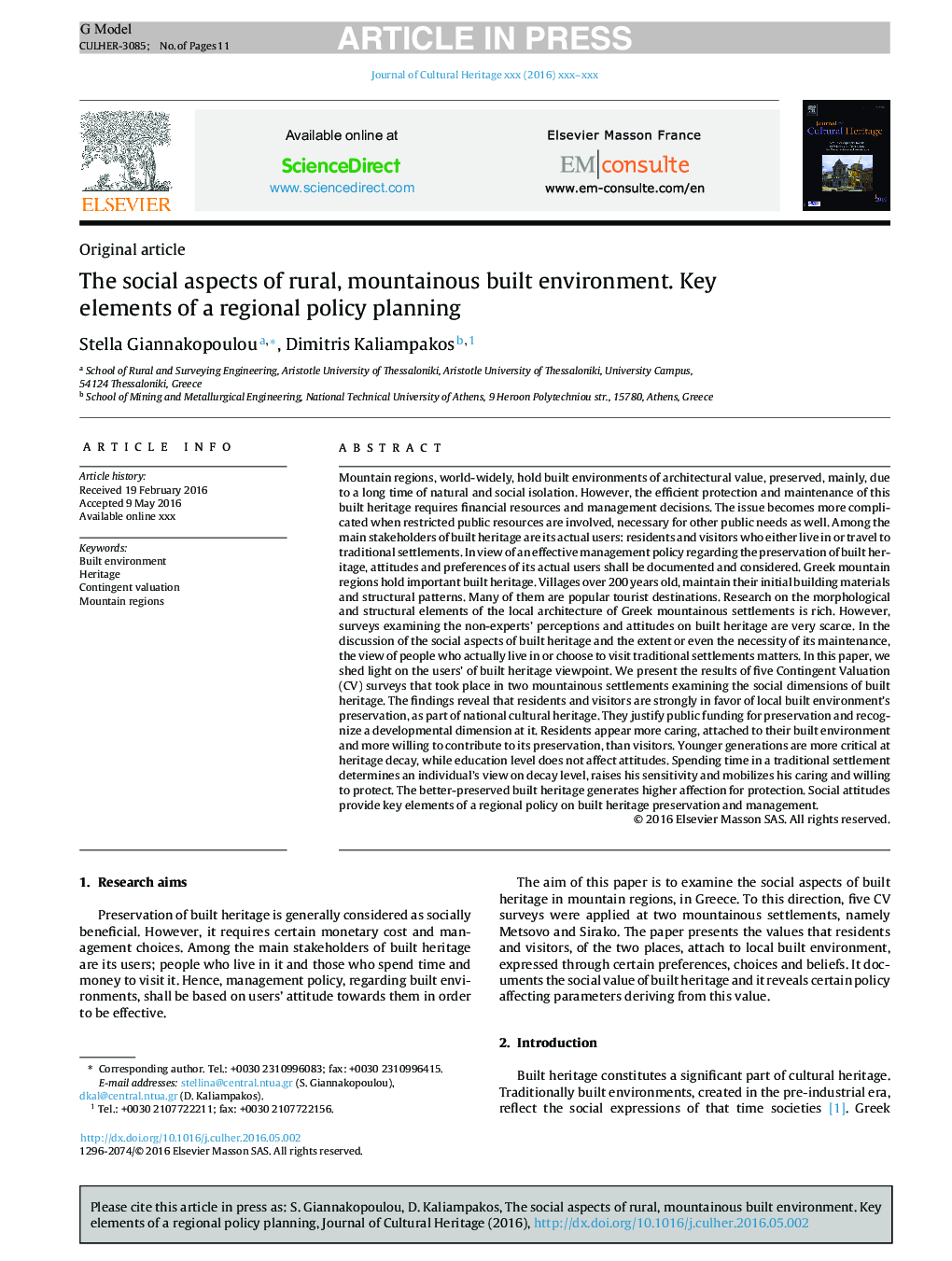| کد مقاله | کد نشریه | سال انتشار | مقاله انگلیسی | نسخه تمام متن |
|---|---|---|---|---|
| 5112811 | 1483955 | 2016 | 11 صفحه PDF | دانلود رایگان |
عنوان انگلیسی مقاله ISI
The social aspects of rural, mountainous built environment. Key elements of a regional policy planning
ترجمه فارسی عنوان
جنبه های اجتماعی محیط زیست روستایی و کوهستانی. عناصر کلیدی برنامه ریزی سیاست های منطقه ای
دانلود مقاله + سفارش ترجمه
دانلود مقاله ISI انگلیسی
رایگان برای ایرانیان
کلمات کلیدی
محیط ساخته شده، میراث، ارزیابی احتمالی، مناطق کوهستانی،
موضوعات مرتبط
مهندسی و علوم پایه
شیمی
شیمی تئوریک و عملی
چکیده انگلیسی
Mountain regions, world-widely, hold built environments of architectural value, preserved, mainly, due to a long time of natural and social isolation. However, the efficient protection and maintenance of this built heritage requires financial resources and management decisions. The issue becomes more complicated when restricted public resources are involved, necessary for other public needs as well. Among the main stakeholders of built heritage are its actual users: residents and visitors who either live in or travel to traditional settlements. In view of an effective management policy regarding the preservation of built heritage, attitudes and preferences of its actual users shall be documented and considered. Greek mountain regions hold important built heritage. Villages over 200 years old, maintain their initial building materials and structural patterns. Many of them are popular tourist destinations. Research on the morphological and structural elements of the local architecture of Greek mountainous settlements is rich. However, surveys examining the non-experts' perceptions and attitudes on built heritage are very scarce. In the discussion of the social aspects of built heritage and the extent or even the necessity of its maintenance, the view of people who actually live in or choose to visit traditional settlements matters. In this paper, we shed light on the users' of built heritage viewpoint. We present the results of five Contingent Valuation (CV) surveys that took place in two mountainous settlements examining the social dimensions of built heritage. The findings reveal that residents and visitors are strongly in favor of local built environment's preservation, as part of national cultural heritage. They justify public funding for preservation and recognize a developmental dimension at it. Residents appear more caring, attached to their built environment and more willing to contribute to its preservation, than visitors. Younger generations are more critical at heritage decay, while education level does not affect attitudes. Spending time in a traditional settlement determines an individual's view on decay level, raises his sensitivity and mobilizes his caring and willing to protect. The better-preserved built heritage generates higher affection for protection. Social attitudes provide key elements of a regional policy on built heritage preservation and management.
ناشر
Database: Elsevier - ScienceDirect (ساینس دایرکت)
Journal: Journal of Cultural Heritage - Volume 21, SeptemberâOctober 2016, Pages 849-859
Journal: Journal of Cultural Heritage - Volume 21, SeptemberâOctober 2016, Pages 849-859
نویسندگان
Stella Giannakopoulou, Dimitris Kaliampakos,
